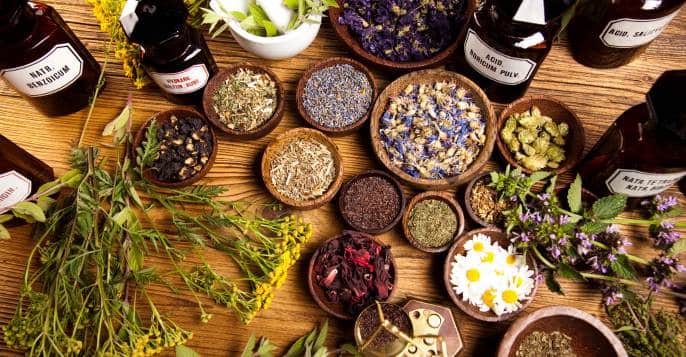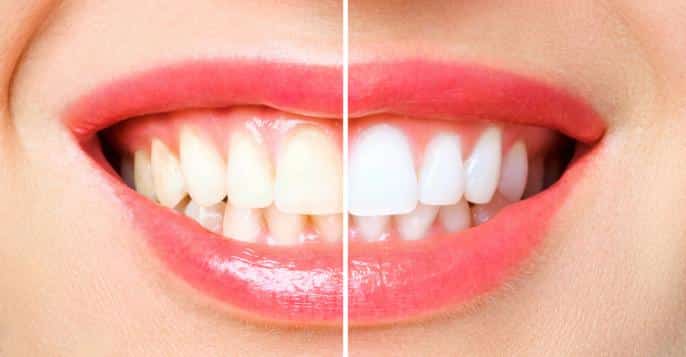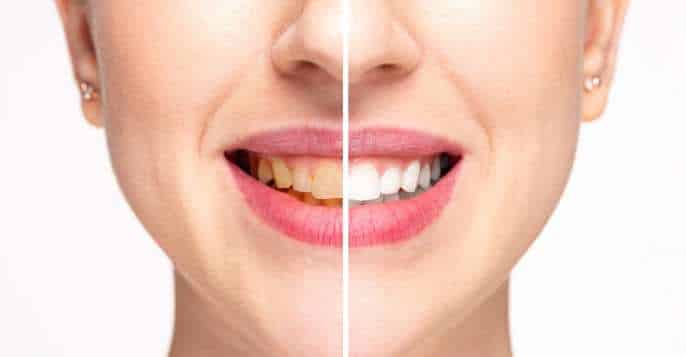Introduction
Oral health plays a crucial role in our overall well-being, but numerous myths and misconceptions persist about the factors that cause yellow teeth. Understanding the science behind these factors is important for identifying suitable teeth-whitening methods.
We will examine the various yellow teeth causes, remove common myths, and address management strategies also we will provide an overview of professional teeth-whitening methods, as well as home remedies to clean yellow teeth.
Yellow Teeth causes
Teeth yellowing can happen either due to outer (extrinsic) or inner (intrinsic) stains. They are as follows.
Extrinsic Stains
Extrinsic stains can appear on the enamel. This is the outer layer of the tooth. Everyday habits, foods, and drinks can cause these stains.
- Everyday habits: Bad oral hygiene can cause plaque buildup, leading to yellow teeth. Regular brushing and flossing keep teeth white.
- Food and beverages: Eating or drinking dark-colored items causes staining. Items like coffee, tea, red wine, berries, and some sauces are a few items. Highly acidic foods and drinks also cause yellowing.
- Smoking and tobacco: smoking leads to yellowish-black stains on teeth because of tar and nicotine.
Intrinsic Stains
Intrinsic stains occur inside the tooth, in the dentin. They are difficult to remove. Yellow teeth causes are as follows.
- Medicines: A few antibiotics, for example, tetracycline antibiotics, can cause staining of teeth if consumed while teeth are emerging.
- Fluorosis: This is caused by too much fluoride. It leads to yellow or brownish-yellow spots on the teeth enamel.
- Aging: the older we get; the tooth enamel gets thinner. This uncovers the natural yellow dentine.
- Genetics: Some of us inherit thinner enamel or yellow dentine. This can lead to yellow teeth.
- Dental injuries: Tooth accidents can result in staining due to internal bleeding.
How to avoid yellow teeth
Dental Hygiene Practices Good oral hygiene and lifestyle changes help avoid and manage yellow teeth. Taking good care of our mouth may help keep our teeth white. This can be done in the following ways:
Brushing properly: Brushing gently twice every day, for two minutes each. Make sure you brush over all teeth and gums.
Flossing: Do this at least once daily to get rid of food and plaque between teeth and gums.
Routine dental checkups: By visiting the dentist at least twice a year, we may reduce and act on any possible yellow teeth causes.
Habits and diet
Changing our diet may also help reduce stains and keep tooth color in check. it can be done in the following ways:
- Reduce stain-causing food and drinks: Limit dark-colored and acidic foods and drinks that stain teeth.
- Quit smoking: By not smoking or using tobacco products, it may stop yellow stains from building up.
- Proper hydration: Drinking water regularly helps create saliva. This helps wash away food that can stain teeth.
Home remedies to clean yellow teeth
Trying out home remedies to clean yellow teeth may help with whitening teeth. Always have a consultation with your dentist first before incorporating any of these methods.

Brushing Your Teeth
Properly brushing teeth is a good way to keep teeth and gums healthy. However, it’s important to choose the right tools for this.
- Toothpaste type: Toothpaste which has baking soda and hydrogen peroxide. They remove stains and whiten teeth due to their abrasive properties.
- Electric vs. manual toothbrushes: Electric toothbrushes scrub out surface stains better than manual brushes.
Baking soda and hydrogen peroxide
A mix of baking soda and hydrogen peroxide helps gets rid of plaque and bacteria. Both substances work together to clean and whiten teeth and help reduce stains
- How to use it: Mix hydrogen peroxide and baking soda in a 2:1 ratio. Brush your teeth with this mix. Rinse your mouth well with water afterwards.
- Precautions: Be cautious whenever using hydrogen peroxide. It can damage your teeth and cause sensitivity if it’s used too often or the wrong way. Always consult it by your dentist before incorporating the method into your daily routine.
Coconut Oil Pulling
This technique helps reduce plaque, which may lead to less yellowing of teeth.
- Benefits: It may help get rid of plaque, bacteria and toxins in the mouth.
- Procedure: Hold one to two teaspoons of liquid coconut oil in your mouth swish it at regular intervals for 10 to 30 minutes. Do not ingest it.
The best results are seen when done on a regular basis. Avoid the method if you have an allergy to coconut. Always get checked with your dentist once before doing oil pulling regularly to ensure it’s safe for your specific oral health status.
Apple cider vinegar
Small doses of apple cider vinegar help reduce staining. It works due to the mild acid may help break down stains.
- Usage: Mix two teaspoons of vinegar with six ounces of water. Gargle for 30 seconds. Rinse your mouth thoroughly and brush your teeth after this.
- Precautions: Apple cider vinegar can hurt tooth enamel due to acidity. More studies need to be done on its safety and effect on teeth whitening.
Fruit Peels
Some believe that rubbing fruit peels on teeth may make them whiter. Using peels from oranges, lemons, or bananas. These have d-limonene or citric acid, which may whiten teeth. Gently rub the peels on your teeth for two minutes. After each use, rinse your mouth and brush your teeth.
Activated Charcoal
With its absorbing properties, activated charcoal helps lift stains from teeth. It can remove stains and pigments off the tooth surface. To use it a capsule of activated charcoal onto your toothbrush and brush your teeth with it for two minutes. Rinse your mouth with water afterwards.
- Safety note: Discuss with your dentist first. Overusing activated charcoal can damage tooth enamel and increase sensitivity or cavities.
Professional teeth-whitening options
For stronger teeth-whitening, consult about these options from your dentist. These are described below.
Whitening Toothpaste
This toothpaste help remove surface stains and improve tooth color. Their stronger abrasive ingredients scrub out food stains better than the usual toothpastes.
- Pros and cons: While they are effective in making teeth whiter, overuse or wrong use can lead to tooth sensitivity or enamel damage.
Tray-Based Tooth Whiteners
This method your dentist may provide or you can buy over the counter. It may lighten the shade of the teeth. It’s used by applying a bleaching gel in a tray fitted over your teeth for two to four hours daily, or overnight.
- Benefits and challenges: It lighten teeth by a shade or two but may also lead to tooth sensitivity and gum pain if misused.
Whitening Strips
These strips deposit a thin coat of peroxide gel on the teeth, making them whiter. They can be used twice a day for 30 minutes to wash away stains and make teeth whiter.
- Usage and risks: Results will differ from person to person, and applying them wrongly can cause tooth sensitivity or gum pain.
Whitening Rinses
Whitening rinses usually whiten teeth by a shade or two. The hydrogen peroxide content in the rinse acts on stains to lift them off the teeth.
- Advantages and disadvantages: They’re very easy to use and do a good job of removing out stains. However, results may take up to three months, and overuse can cause tooth sensitivity.
In-office Dental Whitening
This is a method you can get done for teeth whitening, which has to be carried out by your dentist only as high concentration peroxide gels are used. The dentist uses heavy-duty whitening methods like laser for a brighter smile. These methods are expensive.
- Results and dangers: While they provide the best results, these procedures may lead to tooth sensitivity and enamel damage.
Conclusion
Various factors lead to yellowish teeth, both extrinsic and intrinsic. Understanding the yellow teeth causes and implementing measures such as a proper dental hygiene and dietary modifications may help maintain tooth whiteness. Using home remedies to clean yellow teeth and professional teeth-whitening methods may effectively address yellow teeth. As always discuss the options with your dentist for safe methods that protect against enamel damage or tooth sensitivity.








